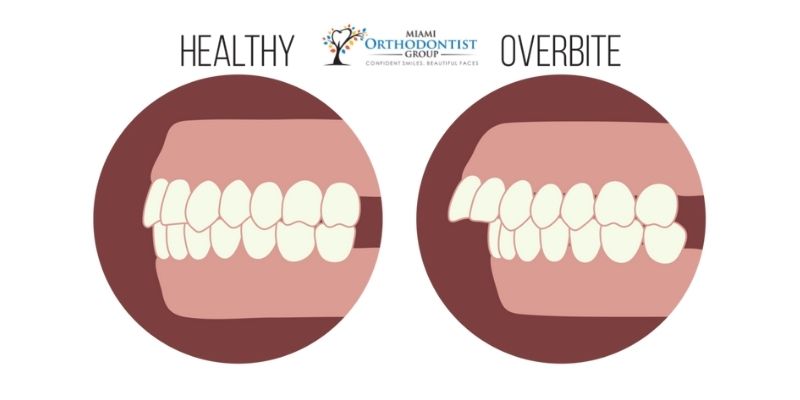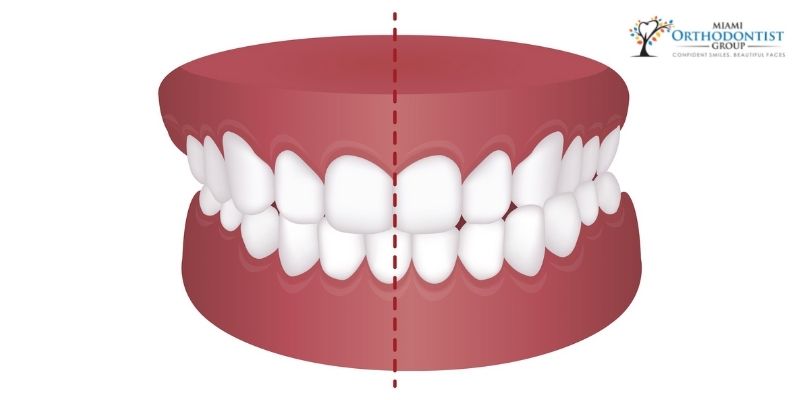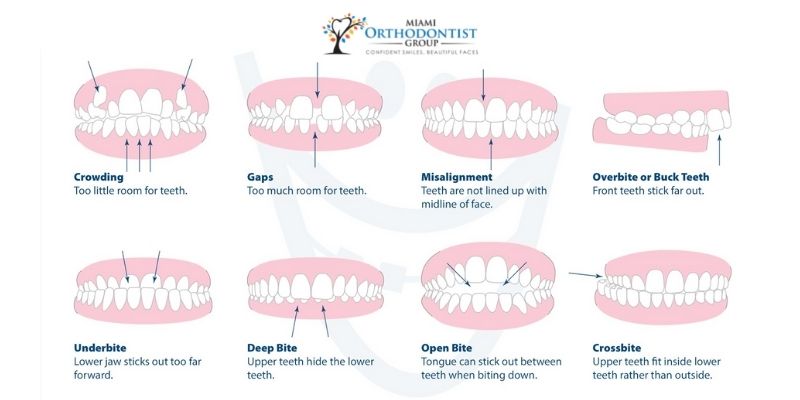Some commonly used metal braces are often requested by people who have it in mind to treat their misaligned or crooked teeth. Orthodontic braces can be used for correcting several other bite problems and boost a person’s smile and confidence.
Some severe bite issues can cause excessive grinding during the day and at night, which can lead to the wearing off of the tooth enamel. Some bites can cause speech impairments and eating disorders. These issues can be easily corrected with the appropriate treatment.
The best way to know your bite problem is by scheduling an appointment with an orthodontist. He or she will recommend the right treatment as regards your bite problems. However, you should be familiar with the following bite problems that require braces.
Types of Bite Problems that Require Braces
Overbite

Anyone with overbite has their upper jaw extending towards the lower one; this makes the lower row of the teeth getting shaded over by the upper teeth row. It is common to come across a patient with an overbite, as this orthodontic issue is one of the most frequent in the entire globe.
Problems accompanying most overbites may include frequent damage to the tooth enamel, eating problems, weak gums, and rapid wear-off of the teeth. The best way to correct an overbite is by wearing braces. Most patients treat the condition by wearing palate expanders.
Crossbite

Crossbites occur in two categories, anterior and posterior. People with anterior crossbites have their lower teeth fitting behind their upper teeth region, while those with posterior crossbites have their upper teeth region fitting at the back of their lower teeth.
Crossbites can occur on one or more teeth. It can occur on both Permanent and temporary teeth as children who are yet to lose their baby tooth can also have crossbites. This bite problem is considered one of the most serious orthodontic cases.
The negative effects of crossbite misalignment can include an uneven growth in the jaw, and an uneven facial appearance and the teeth enamel severely wears off. Since the case involves the teeth protruding, the affected tooth can create a hollow in the gum tissue. This can expose the gum to several infections.
Open Bite
This bite also comprises two types — posterior and anterior. An open bite is said to be in a posterior position when the back teeth are close together, and the front teeth are left open. On the other hand, an anterior open bite is when front teeth are close together, and the back teeth are left open.
Some cases of open bites are a result of having irregular or small teeth size. Other causes of open bites can be related to childhood habits such as thumb sucking, or constantly using the tongue to mount pressure on the teeth. Problems associated with untreated cases of open bites include difficulty in swallowing and slurry speech that can be embarrassing.
Underbite
This bite problem is very common in young children. A person with an under-bite has a protruding lower jaw that causes the lower teeth row to extend and cover the upper region of the teeth.
The problems commonly experienced by people with under-bite may include excessive damage to the enamel, jaw stress or trauma, and worn-off teeth. With the use of braces, under-bite problems can be corrected.
Misalignment
Misaligned teeth occur when the teeth on the jaw are not properly arranged in the mouth. This orthodontic case is not as serious underbites and overbites, but it can cause the teeth’ enamel to wear off. It can also affect the jaw and joints of the mouth.
Gaps
A small gap in between the two front teeth can be attractive, and it is normal. However, it becomes an issue if the gap is larger than normal and is seen in other areas of the teeth, causing the teeth to be misaligned and look appalling.
Large gaps in the teeth can cause serious problems such as weakness to the gum tissues, thereby exposing the gum to the risk of gingivitis and other orthodontic diseases that damage the gum. This can cause an individual’s smile to look horrific. This problem can be corrected by dental implants or wearing braces.
Teeth Crowding
Crowding of the teeth happens when an individual has limited space to accommodate the teeth and help them grow as they should. As a result of the teeth being too close, this condition causes the teeth to rotate, overlap, get trapped at the back of the central region of the teeth.
There are several causes of crowding, but they are most common in individuals having small mouths or those with large teeth. For intense cases of crowding, a dentist may recommend the use of the following devices to solve the problem; braces and palate expanders. Some cases may require total extraction of the affected tooth, or an individual can get orthodontic surgery.
Deep Bite
Deep bites occur when the front teeth extend and cover the teeth at the bottom row. They can be sometimes considered as overbites but only in a few cases. However, not all deep bites are overbites.
Deep bite is a severe case of misalignment and can cause harm to the gum tissue and teeth enamel. Since the teeth are not properly aligned but are rather encased together, the surface of the teeth can cause deep cuts to the inner jaw. This can expose the mouth to infections, and the gum tissue can begin to lose its firmness on the teeth.
Conclusion
There are solutions to all bite problems. You must first identify the type of issue affecting you or your child before looking into solving the problem. You may have an under-bite, overbite, deep bite, crossbites, and so on. You can consult an orthodontic specialist and get a dental examination before getting rid of the real problem.
Almost all orthodontic cases are treated with the use of braces. They are simple to use and provide an effective result to the affected teeth. Some braces are designed not only to correct misaligned teeth but the jaw also gets properly shaped into its perfect place.


